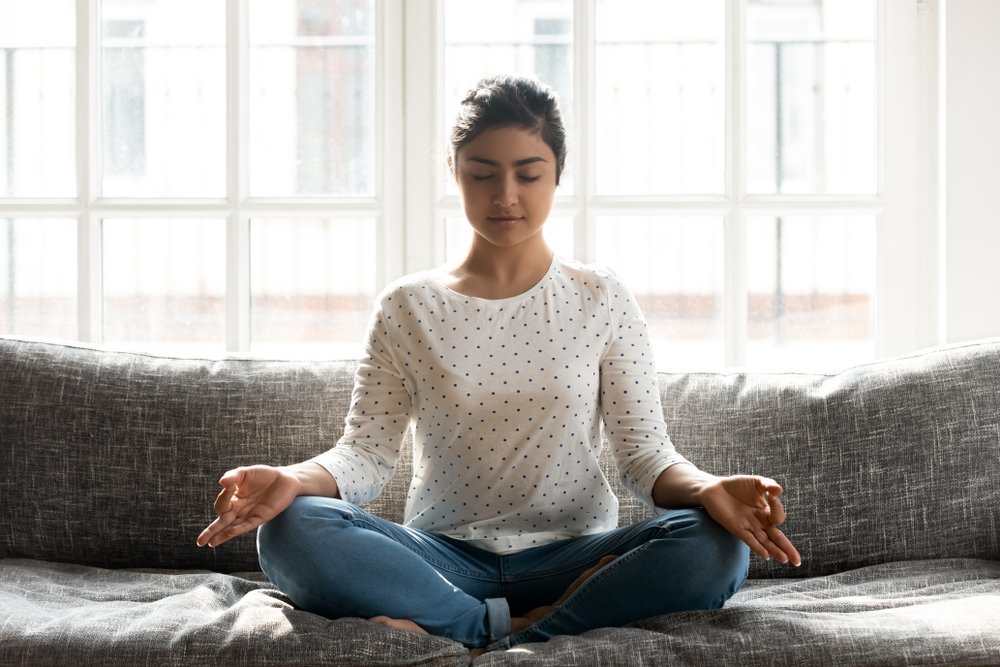Combining the scientific knowledge about meditation with advice on personal and spiritual growth, 6 phase meditation can help us live more compassionate and fulfilled lives. Dee Marques explains the benefits of this meditation style and how to practise it.
Another thing stopping people from trying meditation is the huge amount of choices out there. Mindfulness, vipassana, body scan and guided meditation are some of the most popular meditation styles, but even choosing among these can be overwhelming for a beginner.
Where do you start? How do you know you’re on the right track? And how do you fight distraction and lack of motivation? I’ve been there, so I’m always looking for ways to be more consistent in my meditation practice. I recently came across a meditation technique that seems to tick all the boxes: 6 phase meditation. So today I want to share how this technique can enrich your life.
What is 6 phase meditation?
So-called 6 phase meditation was developed by Vishen Lakhiani. He's the award-winning founder of Mindvalley, a company focused on using technology to promote personal growth and spiritual development. Lakhiani is also a well-known author of best-selling books covering topics like self transformation and unleashing the power of our mind to achieve success.
6 phase meditation incorporates six distinct steps
6 phase meditation is one of the programmes available from the Mindvalley website. This is one of the things I liked the most about it. The programme format is presented in an easy-to-follow and structured way. This takes out all the guesswork involved in figuring things out by yourself, so you can jump straight into the sessions. The 6 phase meditation course is free to enrol on (although sign-up to the site is required).
The idea behind 6 phase meditation itself is to combine scientific knowledge about how our brain works as well as the most effective and transformational advice published in the world of personal and spiritual growth. This guided meditation programme tackles common roadblocks in meditation practice so you can prevent the things that lead many people to give it up after a few days or weeks: a restless mind, self doubt, or the struggle trying to apply ancient principles to our modern lives.
“The idea behind 6 phase meditation is to combine scientific knowledge about how our brain works with transformational advice published in the world of personal and spiritual growth.”
According to Lakhiani, meditation isn’t about clearing your mind. He accepts that the brain is meant to be constantly working, so the programme focuses on redirecting our brain power. The main goals of 6 phase meditation are helping you win the battle against anxiety and stress, connecting with your creative and intuitive side, boosting happiness and productivity, and living more compassionate and fulfilling lives.
To achieve all this, the concept of abundance is key in every stage of 6 phase meditation. With this technique we can identify the ways in which we sometimes self-sabotage, then get rid of anything that holds us back from reaching true abundance and a sense of purpose. This is one of the fundamental benefits of meditation practice.
How to practise 6 phase meditation
Completing the full 6 phase meditation training programme only takes seven days. During these seven days, you’ll need to set apart 15 to 20 minutes to follow the online sessions and go through each of the six phases. Here’s an overview of the main stages of 6 phase meditation:
1. Connection
The first step in 6 phase meditation is developing a sense of connection with yourself and your surroundings. Consciousness is the main enabler of this deep sense of connection, so it helps to visualise it as a bright warm light. Picture the light as it starts wrapping up your body then gradually expands to everything else: your house, your neighbourhood, your city, your country, and the entire planet, all while being aware of your connection to it.
2. Gratitude
During the second step of 6 phase meditation the focus is finding things to be grateful for. Lakhiani suggests making a mental list of five to ten things you’re thankful to have in your life. You may even find more once you get started. They could be anything from having good health to the pleasant scent of your favourite herb in the kitchen window sill. Then, amplify the sense of gratitude by immersing yourself in how you experience these things through your five senses and recreate the experience.
RELATED: Gratitude meditation

Visualization is a key step in 6 phase meditation shutterstock/fizkes
3. Forgiveness
Finding abundance in our lives is difficult if we hold grievances against others, as doing this deprives us from the benefits of forgiveness. Asking forgiveness doesn’t need to be done in person, and unfortunately some of the people we had conflict with in the past are no longer with us. However, it’s still possible to reach out to them in our minds, ask forgiveness, and replace conflict with peace. Once you let go of negative emotions, you’ll start to feel how the sense of connection developed in Stage 1 glows even brighter.
4. Visualization
The fourth step of 6 phase meditation takes you through a vivid visualization of your future so you can finally start living the life you want. Lakhiani’s advice is to choose three areas of your life where you’d like to see improvement. For example, they could be family relationships, work and fitness. During the session, you’re asked to visualize how you’d like them to unfold within the next three years. Then, make the experience real by drawing in your five senses into the visualization.
“The main goals of 6 phase meditation are helping you win the battle against anxiety and stress, connecting with your creative side, boosting happiness and productivity, and living more compassionate and fulfilling lives.”
5. Daily intention
The purpose of this session is to help you realise that our future starts with what we choose to do on a daily basis. During the daily intention stage, the focus is on visualising what it would be like to live the best possible version of your day. Think about what would you be doing, how would you be feeling, what specific emotions would you experience. Then imagine what would be your ideal way to end the day and picture yourself drifting into the most restful and rejuvenating sleep.
6. Blessing
The last step in 6 phase meditation involves calling for the support you need to make your present and future goals achievable. Whether you believe in religious higher powers or rely on your own inner strength, it’s important to feel that you have an external force blessing you with energy, motivation, and even luck. During this session, you’ll spend a few moments noticing the effect of this protective force.
To get started with 6 phase meditation, you can sign up for the programme via the Mindvalley website. Vishen Lakhiani has also put together a series of YouTube videos where he eases you into this guided meditation and takes you through each stage. You can find these videos in the official Mindvalley channel.
The takeaway
Although 6 phase meditation is perfect for beginners or those who struggled getting into meditation in the past, it also suits anyone who wants to take personal growth a step further. Following the programme and making meditation an integral part of your life can change the brain structure and bring important benefits, like the ability to override unhelpful responses and giving you more control over automatic reactions.
You’ll also be able to develop compassionate and positive behaviour and boost your emotional intelligence. Bringing this attitude into every interaction can help build more meaningful relationships and generate a peaceful state of mind. And lastly, you’ll be more conscious about how your thoughts influence your actions and how your brain already has the tools you need to build the future you want, day by day without losing sight of your goals. ●
happiness.com | The fine art of being: learn, practise, share
Are you a happiness.com member? Sign up for free now to:
■ enjoy our happiness magazine
■ share and support in our happiness forum
■ learn with free online Academy classes
Written by Dee Marques
 A social sciences graduate with a keen interest in languages, communication, and personal development strategies. Dee loves exercising, being out in nature, and discovering warm and sunny places where she can escape the winter.
A social sciences graduate with a keen interest in languages, communication, and personal development strategies. Dee loves exercising, being out in nature, and discovering warm and sunny places where she can escape the winter.





Join the conversation
You are posting as a guest. If you have an account, sign in now to post with your account.
There are no comments to display.